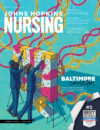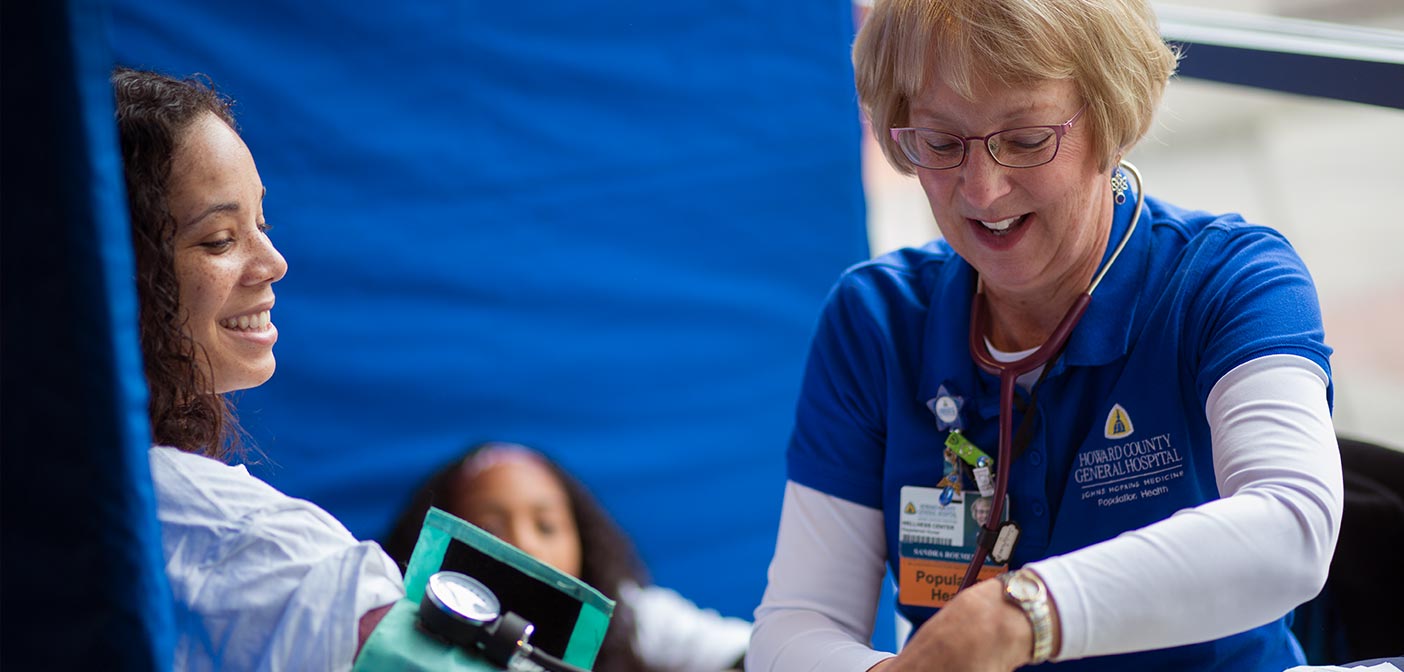By Brennen Jensen
Katherine Talbert helps Howard County residents help themselves to heal
Her gall bladder surgery at Howard County General, a Johns Hopkins Medicine affiliate in Columbia, MD, was a complete success. The 78-year-old was discharged after a three-night stay.
But she went home to her one-bedroom apartment with the two new prescriptions—to add to those she already takes for a heart condition. (Bottles are lined up by her bedside while others cluster around the bathroom sink; how to keep track of them all?) Follow-up appointments are on her calendar, though she’s not sure how she’s going to get to them since she stopped driving. And while her daughter calls from California often, this latest surgery has left her feeling anxious and lonely.
This case model highlights some of the all too real issues Medicare recipients can face after a hospitalization. Some seniors can be so challenged by the demands of their recovery regimes that they end up back in a hospital bed. Fortunately, fewer are “bouncing back” at Howard County General thanks to the Community Care Team program, in which nurses, community health workers, and a social worker help ease transitions from hospital to home.Katherine Talbert leads teams of health and social workers that help patients transition to home and also stay well.“We work with Medicare beneficiaries who have been to the hospital at least twice within the last year,” says program manager Katherine Talbert, MPA, RN. “These are older adults with multiple kinds of chronic co-morbidities who are having trouble managing their care outside of the hospital. Sometimes it’s folks who have a number of chronic conditions and are struggling to balance, say, diabetes and congestive heart failure. Other times it’s just aging individuals who have limited mobility and may be dealing with social isolation.”Working with doctors and hospital administrators, the team identifies eligible patients and develops a custom care plan for each. Up to three months of weekly home visits follow discharge wherein the team monitors the recovery process and helps patients connect with community resources, such as transportation or food assistance. The Community Care Team has served over 450 patients since July 2016, overseeing a 12 percent drop in 30-day hospital readmissions for this patient population.
Talbert became a manager in 2015 but has been with the team since Day One. She remembers her first patient: an elderly man with renal disease who had difficulty getting to his dialysis appointments and taking his medications correctly. Talbert discovered that the latter problem was because of his limited reading ability, and so the team got creative. “We developed a color-coding system to help him learn his different medications,” Talbert says.
Since 2016, Talbert has also managed Journey to Better Health, which takes a more proactive approach to care. The program partners with faith-based groups to provide screenings and classes in how to self-manage chronic conditions such as hypertension and diabetes. Partnering with 15 congregations, it has served more than 1,000 county residents to date.
“Journey to Better Health is about prevention and early disease management and I like that I get to see both ends of the patient spectrum,” Talbert says, adding that she feels she’s right where she wants to be with her nursing career: “I’ve always been interested in a community, holistic approach to nursing rather than the purely clinical.”
Matthew Stevens, LCSW-C, ASW-G, the Community Care Team social worker, interacts with Talbert daily. “Her passion for helping others is always apparent,” he says. “She’s so smart and sees the big picture in health care and knows all the moving parts.”
“She’s just so genuine,” Stevens adds. “That’s perhaps her greatest strength.”

